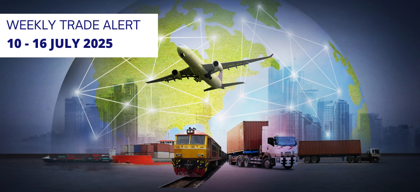The big business potential

Business Development
316 week ago — 10 min read
India’s Micro, Small & Medium Enterprises (MSMEs), are driven by a great deal of passion and a yearning to grow. Many of them harbour dreams of succeeding in their business pursuits and earning a name for themselves, their town, state or nation. It is this undying spirit of the entrepreneur that fuels optimism about India’s impending global economic dominance.
India is all set to become the world’s leading economy over the next decade, thanks to some fundamental economic choices made from the early nineties and more so in the recent years. With nearly 60 million MSMEs spread across the country, including in the remotest parts, it is only obvious that these businesses constitute the heart of our economy. It wouldn’t be wrong to say that MSMEs have earned the status of being an ‘indispensable part’ in the development of the Indian economy by providing large scale employment opportunities at comparatively lower capital costs than most large corporations. They have aided in the modernisation of rural and backward areas, thereby, reducing regional discrepancies, ensuring more even distribution of national income and wealth.
In addition, seising the emerging opportunities, higher levels of entrepreneurial talent are likely to build and take India to an entirely higher level. The current and new MSME businesses are expected to take the greatest load of increased employment creation to address the extremely large young and soon employable section of India’s population.
Business services, food, health & beauty, retail and home services industries have emerged as the leading business verticals in India, underlying India’s strength in the services and business sectors.
Having said that, it is important to understand what the current climatic conditions look like for MSMEs as a whole.
Also read: Increase in digitisation and other SME trends in 2019
Overview
Leading small business industries: Business services, food, health and beauty, retail and home services industries have emerged as the leading business verticals in India, underlying India’s strength in the services and business sectors.
Business opportunities: India shows tremendous scope and promise for entrepreneurs to grow as far as business opportunities are concerned. It is interesting to note that Small and Medium Enterprises have been able to create nearly 4 crore jobs in the past four years, a majority of which have been taken up by suburban and rural population, enabling them to break free from the shackles of unemployment and financial dependency.
Owing to the increased purchasing power and newer opportunities in every sector, consumerism will continue to drive business growth in India. Investors and entrepreneurs can benefit from a mutual advantage that these endeavours will create. Factors like large scale contribution to domestic production, low investments, operational flexibility, export earnings, locational reach and mobility, penetration of technology into the mainstream ecosystem and bandwidth to develop indigenous technology are some key drivers that will lend MSMEs the wings to fly.
The surge of fintech players making the credit process much easier has accelerated the growth of Tier-1 and Tier-2 cities. Entrepreneurs are now looking to invest in Tier 3 and Tier 4 cities which haven’t been explored much. This will help expand entrepreneurial, social and economic opportunities. Financial assistance (ease of accessing credits) and an easier mode of payment are also allowing MSMEs to consider increased scale of business in these cities.
But MSMEs today face a fair number of challenges, which they need to address to achieve the growth opportunities that the nation presents.
Also read: The power of relevance in an evolving business landscape
The dark clouds
Lack of access to newer technology: Despite the progression of technology over the past years, many businesses continue to use far lesser technology than they ought to, and this has led to lower profitability making them less competitive in a rapidly evolving business scenario. Whether it is the use of Enterprise Resource Planning (ERP) software or the implementation of Customer Resource Management (CRM), improving the technical backbone of a business can definitely help it grow. It is essential that SMEs stay abreast with the latest technology solutions for them to survive (and grow) the wave of digitisation.
Complicated regulatory practices: The absence of a common regulatory body has negatively influenced many SMEs from successfully establishing their business. Regulatory practices like settling bankruptcy, insurance, tax assessments, securities and certifications are some roadblocks in the way of SME growth.
Poor marketing techniques: Many SMEs have not kept up with the modern-day marketing techniques, especially in today’s digital world. Most continue to run their marketing strategies in rather outdated and traditional ways. This presents a growth challenge, risking profitability and threatening survival.
As a global business networking platform, connecting small businesses to each other so they may explore business opportunities, GlobalLinker has on-boarded over 250,000 MSMEs from 150+ countries. While we may classify these MSMEs differently – by the stages of evolution (early, growth or mature stages); by their industries (GlobalLinker uses 37 industry and 208 sub industry classification); or their sizes (micro, small or medium); or by their nature of business (manufacturers, traders, retailers, service providers etc.), the one universal truth that is observed across firms from all parts of the world is that all MSMEs eagerly seek business growth opportunities. It is also true that their digital adoption is the slowest.
The challenges of business growth are not unique to MSMEs of any one nation. They all face nearly the same issues – lack of awareness of new-age solutions and techniques to grow their businesses. The lack of access to financing and the challenges in the lack of economies of scale.
But, as with every dark cloud, there exists a silver lining here too. MSMEs in India have a wide range of opportunities that will likely pave a path for their emergence as strong and competitive businesses.
The silver lining
E-commerce: Increased mobile phone and internet penetration coupled with a rapid increase in smartphone usage are massively contributing to the growth of e-commerce in the country. Social-Mobility-Analytics & Cloud (S-M-A-C) is creating increased efficiencies for modern businesses. High levels of social networking usage by India’s youth makes leveraging the power of targeted marketing to generate sales an obvious choice for most businesses.
Government plans: The government in the past few years have introduced many initiatives like the ‘Make in India’, ‘Startup India’ and ‘Skill India’ to boost the SME community. The retail sector which employs nearly 6% of the country’s total labour force has been fighting off competition from major players in the market – many of whom have used large scale access to funds in driving new and non-sustainable practices. A new initiative by the government is looking at effectively addressing this issue as well.
Demographic skew: India’s strong domestic market and its young population will present tremendous market opportunities. The high economic growth India has been experiencing will lead a natural tail wind for many businesses. This, combined with a strong consumption oriented economy, will create increased economic opportunities for enterprising businesses to tap.
Abundance of fintech firms: With fintech firms and others who are creating more efficient ways of lending to this highly underserved segment, on the ascent, alternate ways to fund businesses will become much easier.
The change of guard: Many of India’s businesses were established in the ’70s, ’80s and ’90s. Many of these firms are seeing new generation entrants take control and a large number of the new-age second generation entrepreneurs come with very different backgrounds than the earlier generation. They are better read, have enjoyed higher levels of exposure (are generally more digitally literate) and were born in more competitive times. As they take greater independent charge of their businesses, we are bound to see changes in their approach to business with increased adoption of technologies and new age marketing.
Finally
The year 2019 has already seen some dynamic changes in the Indian Startup and MSME sector. With so many opportunities at hand, the future looks promising here on. India’s MSMEs appear well poised to be the pillars on which India will usher its global economic dominance. The more enterprising amongst them will get there faster and may even shed the MSME label and emerge to become India’s, and probably the world’s, leading enterprises in a very short time.
Also read: How SMEs can succeed in a digital world
Article by Sameer Vakil published in STOrai magazine.
View Sameer 's profile
Most read this week












Comments
Share this content
Please login or Register to join the discussion